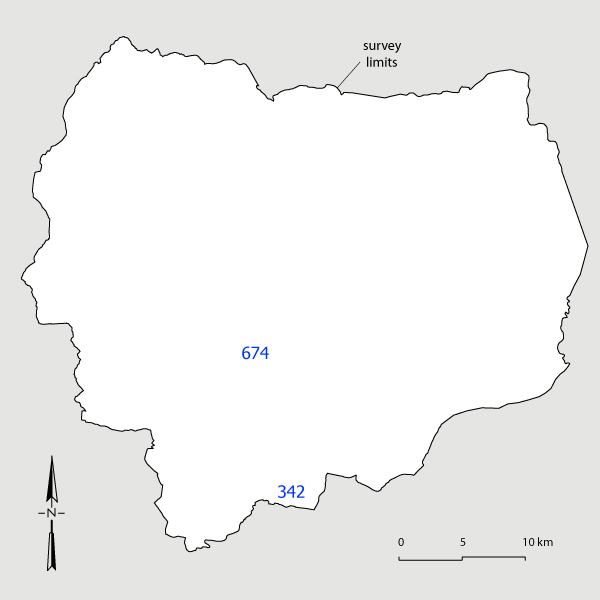
|
Chifeng Settlement Dataset |
|
Stratigraphic Testing by Zhang Yaqiang and Robert D. Drennan |
Two sites were selected for stratigraphic testing with the principal aim of contributing to the clarification of the ceramic chronology upon which regional settlement analysis depends. A secondary objective of the stratigraphic testing was to provide additional information useful for the interpretation of the surface remains recovered by the regional survey. Toward the realization of both these aims, a strategy of small tests was pursued to obtain a number of samples of ceramics (as well as other artifacts and ecofacts) in stratigraphic relation to each other in depositional sequences in different parts of each site.
The approach to stratigraphic testing was the same at both sites. First a large number of systematic surface collections were made by the same methodology used in the regional survey. Each consisted of a circle 3 m in diameter, drawn on the surface, within which all artifacts were collected and returned to the laboratory for washing and analysis. Once the surface collections had been completed, small tests, usually 1 by 2 m, were excavated in different parts of each site.
Excavation was carried out initially by scraping horizontally with square-bladed shovels, so as to be able to notice changes in the nature of the soil. All dirt was screened through quarter-inch (6 mm) mesh, and all ceramics and other artifacts were bagged separately by layer and returned to the laboratory for cleaning and analysis. All fragments of bone were also collected and bagged, as well as visible pieces of carbon. Excavation proceeded in this way in each test unit to a depth of 10 cm or until a change in the color or nature of the soil was encountered, whichever came first. The floor of the excavation was then cleaned and examined before another layer was begun. The depth of each cleaned floor below the datum established for the test was recorded for each corner of the test as well as midway along each long wall. If different depositional units were noted on the cleaned horizontal surface, the next layer was dug in separate sectors that corresponded to them, so that the artifacts recovered could be assigned to these natural stratigraphic units separately. Shovels were laid aside and trowels were used for more careful excavation as needed, based on the complexity of the stratigraphy and the size of the units being excavated. When sufficient amounts of carbon for radiocarbon dating were observed (usually one or a few nearby large chunks), these were collected and wrapped in aluminum foil. The positions of radiocarbon samples were recorded by measurements in three dimensions. Excavation continued until sterile subsoil was reached, and sometimes continued into it a little to be sure that no further cultural material was forthcoming.
Once excavation was complete, stratigraphic profile drawings were made of all four walls of the test. These served as the basis for the interpretation of the depositional sequence. Individual lots of artifacts recovered from the excavation of each layer could be related to these profile drawings according to the measurements taken as they were excavated. Artifacts from these individual excavation units could then be grouped together according to how they corresponded to the "natural" units of cultural deposition. The periods during which those units were deposited were then determined on the basis of the ceramics included in the deposits.
The map below locates the two sites tested within the Chifeng survey area.
Click on the map for detailed information about the excavations at either site
